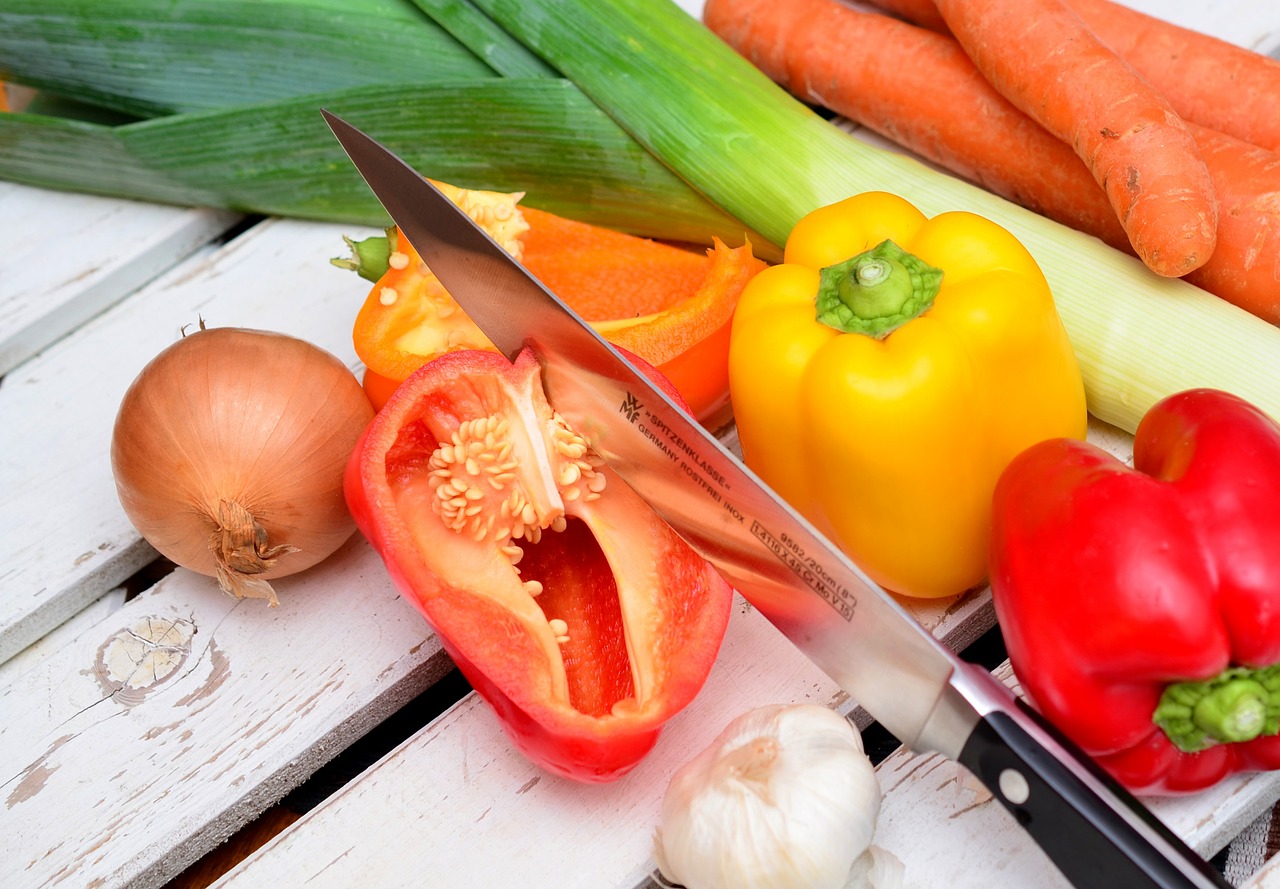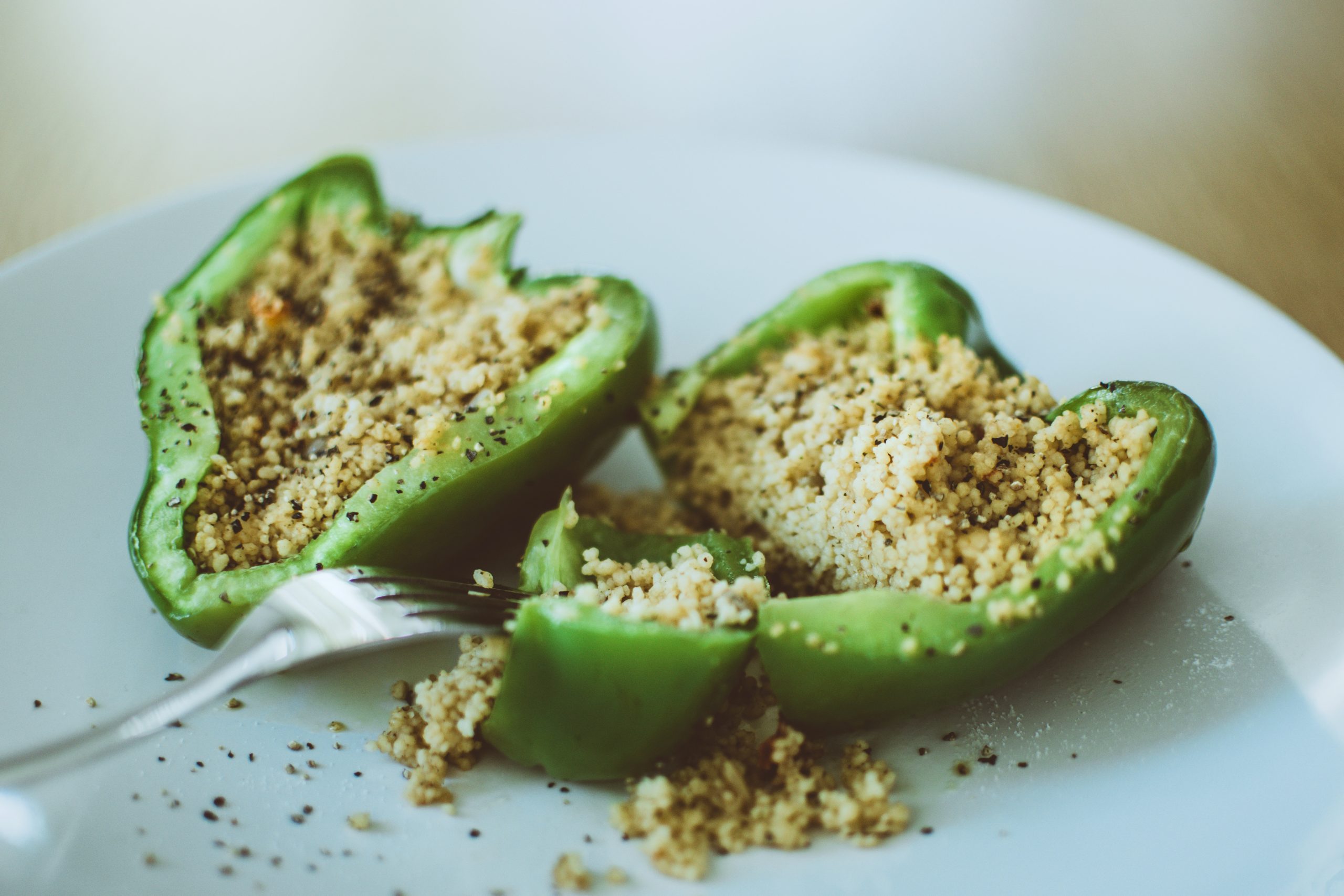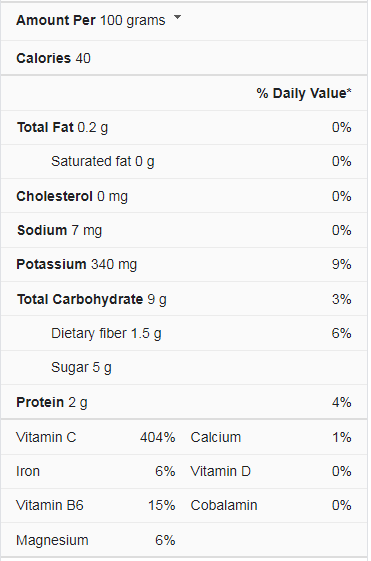When shopping for the bell peppers to cook with, look for ones with bright skin and no soft spots. They should be heavy with glossy skin and have no cuts or mold on the stem. Organically grown peppers are best for cooking since they contain more sugar than other vegetables. Make sure to choose one with an even shape and size to ensure even cooking. Red peppers are the sweetest and most nutritious.
Bell Pepper Nutrition Facts
Bell Peppers
Bell peppers, often known as sweet peppers, are a popular raw or cooked vegetable. They are native to North and South America and are members of the nightshade family. In the United States, they are in season during the summer and fall. Bell peppers come in a variety of colors, depending on their ripeness. People can pick from the least ripe green peppers to the ripest yellow, orange, purple, or red. Peppers of all colors have nutritional benefits, although red peppers may have more antioxidant and phytonutrient contents than yellow or green peppers because they are riper. Bell peppers, like many vegetables, contain trace levels of sugar. Red peppers have a sweeter flavor than green peppers, which can be bitter. In this post, we’ll look at the health advantages of bell peppers, as well as potential hazards associated with their consumption and culinary options.
Best Bell Pepper Recipes
Here are some best bell pepper recipes:
Sautéed Garlic-Herb Bell Peppers
Bell peppers add color and flavor to stews, salads, soups, rice, and pasta sauces and are excellent on their own. Our sautéed bell peppers recipe is a simple side dish for chicken, fish, pork, or beef, but it’s also a tasty antipasto or a savory addition to sandwiches, wraps, or even pizza.
Quinoa Stuffed Peppers Recipe
Classic Stuffed Peppers
Roasted Bell Peppers
Sauteed Peppers and Onions
Vegan Fajitas
There are no such things as too many simple meal recipes. So, here’s our new favorite: these amazing vegan fajitas! This dinner is a hit with everyone, including meat-eaters. It’s a terrific way to cook a tasty, healthful dinner that no one will notice is meat-free! Various roast vegetables with seasonings on a sheet pan, then serve with refried beans and “guac-ish.” Talia Pollack’s Party in Your Plants cookbook inspired this meal, indeed a plant party. Here’s what you should do, as well as more information about this delectable plant-based book!
Grilled Peppers and Onion
Vegetarian Burrito Bowl with Cauliflower Rice
Alex said after eating this healthy burrito bowl, “This may be the best bowl of vegetables I’ve ever eaten.” It’s an ultra-delicious recipe that will have you coming back for seconds! This bowl dinner is almost entirely composed of vegetables, and it’s quickly becoming one of Alex and my new family’s favorites, which we’ll be making again and again.
Panzanella Recipe
Best Healthy Pizza
Another fantastic way to prepare bell peppers? Make a pizza with them! Thinly sliced red and yellow bell peppers are sautéed till soft and delicious. Then combine them with our best pizza sauce, capers, arugula, and Parmesan cheese on a thin crust pizza for great flavor!
Is Bell Pepper Healthy To Eat?
Here are some health benefits of bell peppers:
Inflammatory Conditions and Arthritis
According to the Arthritis Foundation, bell peppers may help reduce the risk of developing some types of arthritis and other inflammatory health conditions. Two elements contribute to this: beta-cryptoxanthin and a high vitamin C concentration. Red and orange peppers contain beta-cryptoxanthin, a carotenoid. It may lower a person’s risk of developing rheumatoid arthritis if they consume it. Because of their high vitamin C content, bell peppers may aid in protecting bone and cartilage cells. Consuming less than the daily recommended consumption of 75 mg of vitamin C for females, and 90 mg for males, could raise the risk of osteoarthritis. Half a cup of vegetables is enough for a full day’s worth of nutrition.
May Reduce the Risk of cataracts and macular degeneration
Nutrition plays a crucial role in delaying the onset of age-related vision deterioration. When consumed adequately, two carotenoids named lutein and zeaxanthin appear to promote eye health, and they do so by preventing oxidative damage to the retina. These carotenoids, as well as other preventive minerals like vitamin C, are abundant in red peppers. Numerous studies suggest that eating foods high in carotenoids, particularly lutein and zeaxanthin, daily may lower the incidence of cataracts and macular degeneration.
May reduce the likelihood of anemia
Anemia is a frequent illness that affects women and girls of reproductive age. It is caused by a shortage of oxygen in the blood, and iron deficiency is one of the most common reasons. Bell peppers have a low iron content but are incredibly high in vitamin C, with half a pepper providing up to 100mg. This is significant because vitamin C boosts iron absorption in the gut. Numerous studies show that eating a diet rich in vitamin C-rich fruits and vegetables boosts iron absorption. Bell peppers are also beneficial because they contain vitamin B6, which is required to produce hemoglobin, the protein that transports oxygen throughout the body.
May Protect Against Certain Chronic Diseases
Bell peppers are high in antioxidants, linked to improved health and protection against diseases including cancer and heart disease. For instance, peppers are especially rich in antioxidant vitamins, including vitamins C, E, and beta-carotene. They also contain many polyphenols, including lutein, quercetin, and capsanthin, the latter of which is particularly abundant in ripe red peppers. Peppers have a tremendous anti-inflammatory capacity and are believed to reduce the risk of chronic disease due to their antioxidant strength. Regrettably, large-scale studies specifically looking at the impact of bell pepper consumption on the incidence of chronic disease have yet to be conducted.
May delay age-related memory loss
Exciting data from animal studies suggest that eating bell peppers can help reduce memory loss in Alzheimer’s patients. Compounds in ripe peppers appear to suppress an enzyme that generates amyloid proteins, which clump together around nerve fibers and contribute to the risk of Alzheimer’s disease. Following an investigation, it appears that the many plant chemicals found in peppers, such as phenols, carotenoids, and flavonoids, may be to blame for these findings.
Conclusion
When shopping for the best bell peppers for cooking, look for pepper with glossy skin and a green stem. The exterior should be smooth and glossy with no brown spots or wrinkles. It should be firm to the touch and firm but discard it if it has too much of either. Buying red bell peppers is a great way to add more vegetables to your recipes. This vegetable is rich in vitamins and antioxidants.


